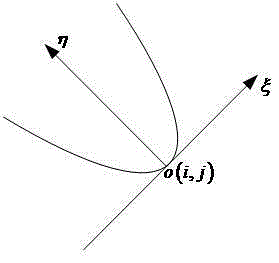Image de-noising method based on bidirectional enhanced diffusion filtering
A technique of diffusion filtering and two-way diffusion, applied in the field of image denoising, which can solve the problems of complex calculation, slow processing speed, and inability of filters to effectively maintain image texture and detail features
- Summary
- Abstract
- Description
- Claims
- Application Information
AI Technical Summary
Problems solved by technology
Method used
Image
Examples
Embodiment Construction
[0041] The present invention will be further described below with reference to the accompanying drawings.
[0042] The image denoising method based on the bidirectional enhanced diffusion filtering of the present invention simplifies the diffusion equation and establishes the bidirectional diffusion coefficient, so that the model can realize the bidirectional process of smoothing and sharpening during the diffusion process. The image is enhanced, and wavelet transform is used to enhance the overall outline of the image and weaken the texture details of the image. Then, the gradient threshold is adaptively designed and improved to automatically control the gradient threshold according to the maximum gray value of the image and the number of iterations. The edge and detail features of the image are further preserved. Finally, the proposed model is simulated, and the method is simulated and verified by MATLAB software, which can take into account the removal of image noise and the...
PUM
 Login to View More
Login to View More Abstract
Description
Claims
Application Information
 Login to View More
Login to View More - R&D
- Intellectual Property
- Life Sciences
- Materials
- Tech Scout
- Unparalleled Data Quality
- Higher Quality Content
- 60% Fewer Hallucinations
Browse by: Latest US Patents, China's latest patents, Technical Efficacy Thesaurus, Application Domain, Technology Topic, Popular Technical Reports.
© 2025 PatSnap. All rights reserved.Legal|Privacy policy|Modern Slavery Act Transparency Statement|Sitemap|About US| Contact US: help@patsnap.com



